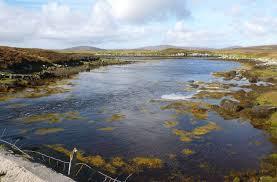
Tidal lagoons could play an important role in ensuring secure power supplies, according to a former energy minister who has led a review into the technology.
Charles Hendry was speaking before the publication of his independent review, commissioned by the Government, into the potential for tidal lagoon energy in the UK.
Support by the review for the renewable energy technology will be a boost to efforts to get a “world first” project off the ground to harness the power of the tides in the Severn Estuary by building a lagoon in Swansea Bay.
The assessment, commissioned last year amid negotiations on the Swansea Bay project, has looked into whether lagoons represent value for money and how they could contribute to the UK’s energy mix in the most effective way.
Mr Hendry told BBC Radio 4’s Today programme: “We know it absolutely works. One of the great advantages is it is completely predictable for all time to come.
“We know exactly when the spring tides and neap tides are going to be every single day for the rest of time and so, in terms of meeting security of supply, lagoons can play an important role.”
Renewable energy firm Tidal Lagoon Power wants subsidies for a £1.3 billion scheme to build the world’s first lagoon power plant in Swansea Bay.
The lagoon would involve a U-shaped breakwater built out from the coast, with a bank of turbines turned by water which would harness the rise and fall of the tides to generate renewable electricity.
While the Government has expressed backing for lagoons, former prime minister David Cameron said his enthusiasm had been “reduced” by the costs, with much higher subsidies than nuclear or offshore wind mooted at one stage.
Tidal Lagoon Power now says the Swansea Bay scheme would require only the rate of bill-payer support currently offered to nuclear, and because the project was small it would cost households as little as 20p to 30p on average.
It would also generate thousands of jobs and boost the Welsh economy, while supplying predictable, clean electricity for 155,000 homes for 120 years.
Mr Hendry said he had assessed how expensive the project was by spreading the cost of the subsidies over the lifetime of the project.
“If you look at it over the cost of that 120 years then you get a very much lower figure than almost any other source of power generation,” he said.
Tidal Lagoon Power claims the Swansea Bay scheme would be a proof-of-concept project opening the way for a series of lagoons around the coast, costing less due to economies of scale and meeting 8% of the country’s power needs for 120 years.
Greenpeace UK’s chief scientist Doug Parr said tidal lagoon energy is the most reliable source of renewable energy for the UK and the Swansea Bay project is an opportunity to generate clean power from the tides.
He said: “Up to now, cost has been considered a barrier but the Hendry report suggests that tidal lagoons can potentially play a cost-effective role in the UK energy mix.
“And the Government should get on with it because it could be the first of a wave of tidal lagoons across the UK, and even internationally. So we can lead the world in providing a new, renewable innovation to meet our clean energy needs.
“If Swansea is successful it could prove the investment case for further major projects that could potentially generate a significant chunk of the UK’s electricity needs, and help towards meeting our carbon targets, whilst creating thousands of new infrastructure jobs too.”
But some conservation groups have raised concerns about going ahead with a series of lagoons before the impacts of the Swansea scheme on wildlife are assessed.
